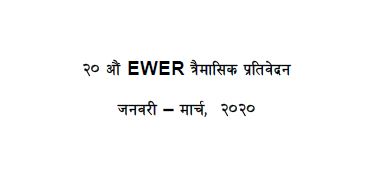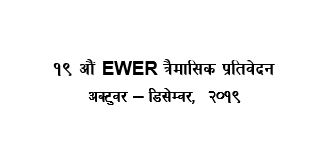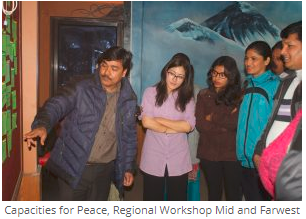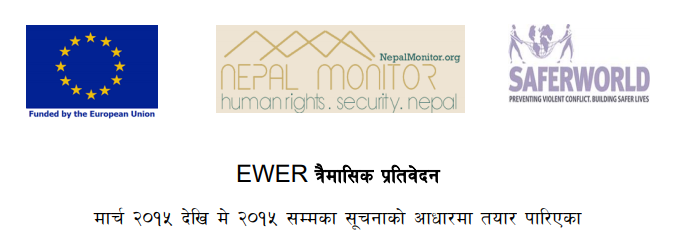Incident Reports
Kin of disappeared demand truth, ache for justice- Dewan Rai's Op-ed on Transitional Justice
2016-08-30
Nepal
Bhojiliya Chaudhari broke into tears as she recalled how for 10 long years she ached for her daughter who disappeared in November 2005 during the Maoist insurgency.
The following year, a peace agreement between the government and then Maoist rebels in 2006 ended the decade-long insurgency, but it did not end her ordeal. She did not know what had happened to her daughter.
Ten years later in 2015, some pieces of clothes were found in a jungle of Saiga Village Development Committee, a five-hour walk from her village Thapgau of Sirigau VDC of Dang district. And that was all she found as the last remains of her daughter.
“It took a while to accept the truth,” she recalls. “Nothing can ever fill the void in my heart; but at least I knew that she was gone.”
Chaudhari is one of a few families who at least got to know the fate of those disappeared during the insurgency.
The government record shows 1,530 people were disappeared during the insurgency.
The ninth annual report of the International Committee of the Red Cross (ICRC) and the Nepal Red Cross Society (NRCS) released on Monday has updated the figure of missing persons at 1,334.
The Commission of Investigation on Enforced Disappeared Persons (CIEDP) has already received 2,864 complaints of disappearance. The transitional justice body, formed 18 months ago, has been struggling to establish an exact number of disappeared cases.
Most of the families of those who were disappeared during the decade-long war are still not sure whether they will ever be able to know the fate and whereabouts of their loves ones.
At a programme jointly organised by the ICRC, NRCS and National Network of Families of Disappeared and Missing Nepal to mark the International Day of the Victims of Enforced Disappearances, family members of the disappeared demanded the truth as to what happened to their relatives.
“Is that too much to ask for?” said Ruby Shrestha, whose three relatives were taken into custody in the Army’s Bhairavnath battalion. They never returned
.
According to the ICRC report, 91 percent of the 1,334 disappeared people are males and 81 percent are married.
The existing legal regime as well as society has further victimised the wives and children of the disappeared. Most of them have been deprived of their rightful property share of their husbands. Under the current legal regime, wives of the disappeared persons cannot claim property.
“There is still stigma attached to it,” said Shrestha, “We are facing hard time educating our children.”
Ram Bhandari, president of National Network of Families of Disappeared and Missing Nepal, said that the state had turned a blind to the plight and livelihood issues of the victims’ families.
“And then the government announced an interim relief amount of Rs 1 million; it was humiliating…The government granted half the amount to only a few in instalment,” he added.
Now the CIEDP, which says it has completed first screening of the complaints, has six months to complete its investigation. According to its estimates, around 10 percent of the complaints may not fall under its jurisdiction.
“We are short of experts,” said Lokendra Mallick, chairman of the CIEDP, which is working on a shoestring budget.
Despite constraints, Mallick, however, assured the victims that the CIEDP would leave no stone unturned to deliver justice to the victims and urged all for cooperation in the investigation process.
ICRC chief Andre Paquet expressed hope that the transitional justice bodies will do all the needful to ensure justice to the victims.
“We hope that the Commission of Investigation on Enforced Disappeared Persons and the Truth and Reconciliation Commission will invest every effort to give the victims and the families the long-awaited answers on the fate of their loved ones, as provided for in the International Humanitarian Law, and address other needs they express,” said Paquet
.
National/Online Media
Related Reports
Transitional Justice / Conflict Victims / Kathmandu
Demonstration staged demanding to rectify TRC bill
August 04, 2023
Transitional Justice / Conflict Victims / Kathmandu
Conflict victims, police clash at New Baneshwar
April 18, 2023
Transitional Justice / Conflict Victims / Kathmandu
Police detain protesting armed conflict survivors in Kathmandu
April 18, 2023
Transitional Justice / Conflict Victims / Kaski
Conflict victims stage sit-in in Kaski demanding to make transitional justice bill victim friendly
March 31, 2023
Transitional Justice / Conflict Victims / Kathmandu
Conflict victims stage demonstration in Kathmandu demanding honorable justice
August 15, 2022






